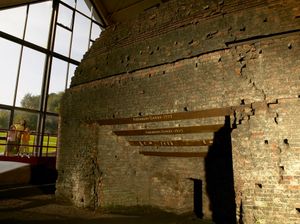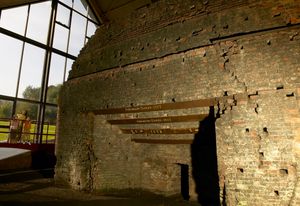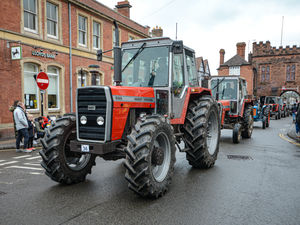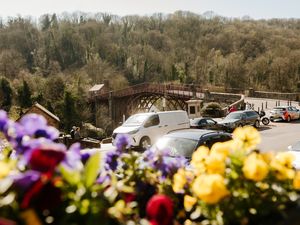Coalbrookdale furnace blazes its way into history top 10
It helped shape the world as we know it today and is hailed as the birthplace of the Industrial Revolution.

Now the place where it all began has been named in a prestigious list telling the history of England.
Tristram Hunt, director of the V&A, picked The Old Furnace at Coalbrookdale in Ironbridge as one of 10 ‘industry, trade & commerce’ places key to England’s past and present.
Mr Hunt, also a former Labour MP, said he had selected the furnace because it had been integral in shaping modern Britain and its influence on the world.

The furnace was burning bright when artist Philippe Jacques de Loutherbourg created his famous painting Coalbrookdale by Night in 1801.
Mr Hunt said: “The work of Abraham Darby was so revolutionary in providing the power, energy and might that would transform the steel industry and generate the wealth from which modern Britain emerged.”
The key industry, trade, and commerce sites are part of a wider list of A History of England in 100 Places put together by Historic England. All 10 places on the list will be discussed in a podcast series, which will feature Mr Hunt.
The list of 10 places that tell of “loss and destruction” was also selected by Much Wenlock-born historian Mary Beard.
It included Hillsborough, The Crystal Palace and the Mary Rose.
Historic England said the Ironbridge Gorge furnace had effectively changed the world.
A citation from the organisation states: “A discovery here in 1709 is widely thought to have been the catalyst for the Industrial Revolution which transformed England and the world.
“Iron production was not new to this area but it was in this furnace that Abraham Darby I pioneered the method of smelting iron fuelled by coke (heated coal), rather than charcoal (heated wood).
“This allowed the furnace to become incredibly hot and meant that high quality iron could be made in massive quantities.
“The reliance on wood supplies for charcoal up to this point had meant that producing iron on an industrial scale simply wasn’t possible, but by switching to coke Darby kick-started the modern iron industry and gave this place the nickname The Birthplace of Industry.
“Bridges, buildings, railways – the backbone of the Industrial Revolution, all began to be constructed using iron which paved the way for the modern world.
“Iron framing technology in buildings, first used at Shrewsbury Flaxmill Maltings not far from Coalbrookdale, even led to the tall buildings which dominate our cities today.”
Duncan Wilson, chief executive of Historic England said it had been a painstaking process that had led to the selection of the final 10.
He said: “We had an overwhelming response from the public in this category, with nearly 800 nominations of places which help tell the story of our industrial and commercial past.
“Each of these 10 places chosen by Tristram Hunt demonstrate that many different industries and enterprises, from brewing and coal mining to financial services, have defined who we are as a nation and although some have changed uses, they remain a central part of our lives today.”
Mr Hunt’s list also included Middleport Pottery, Burslem, Stoke-on-Trent.
He said: “This is one of the great reminders of the culture of The Potteries, those six towns in Staffordshire that now make up Stoke-on-Trent, which produced a world historic footprint in terms of ceramic design and production.”
Burslem is called the “Mother Town” of The Potteries and Middleport Pottery, in the heart of Burslem, has made its famous Burleigh pottery since 1889. It was described as a “Model Pottery” of the Staffordshire industry because it was so cleverly designed to streamline the production process.





